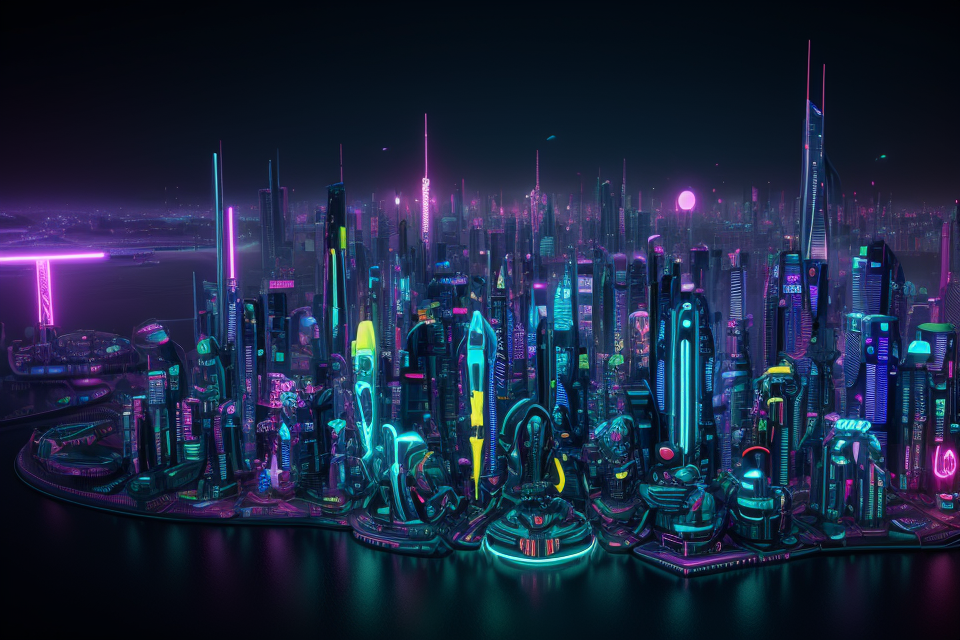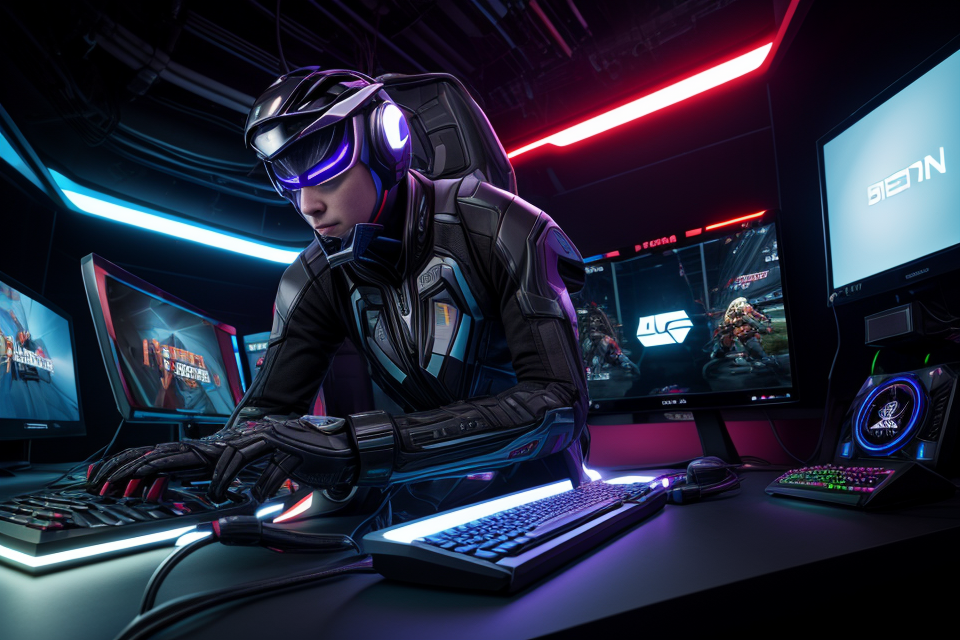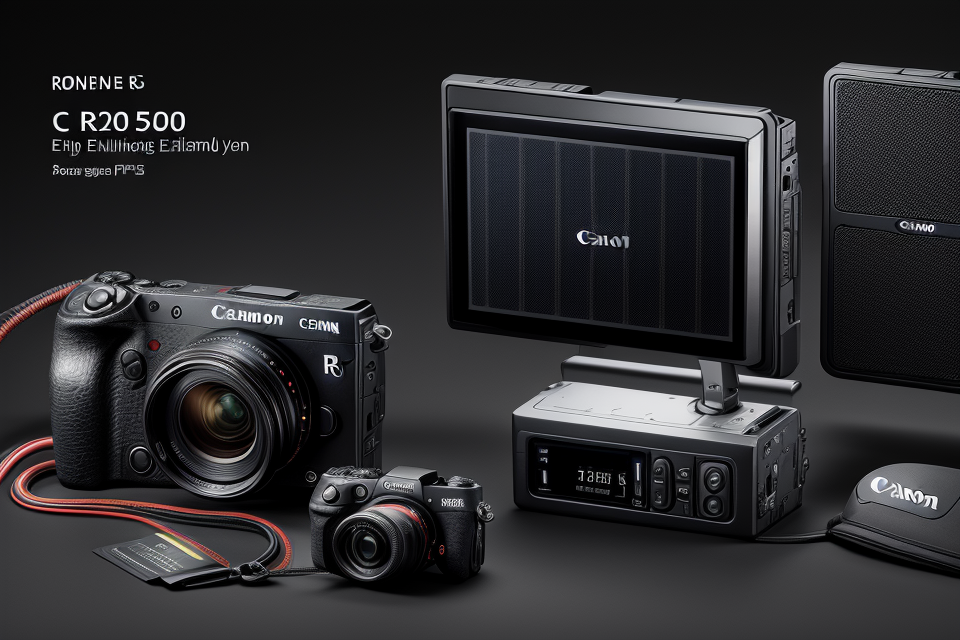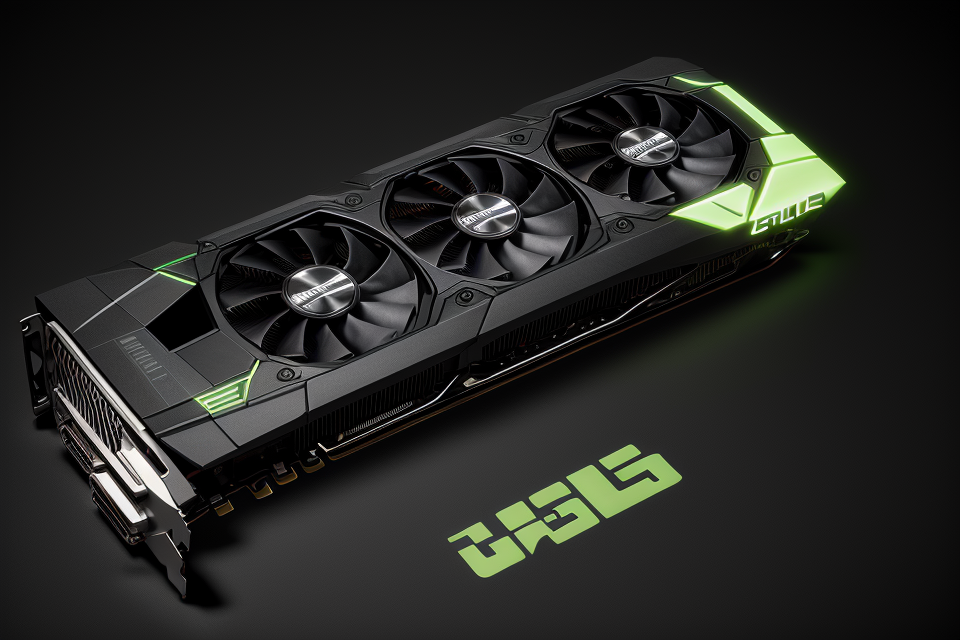
Are you a beginner looking to enhance your computer’s graphical capabilities? Then you might have come across the term ‘GPU’ somewhere. But what exactly is a GPU and how does it work? A GPU or Graphics Processing Unit is a specialized type of processor designed to handle the complex calculations required for rendering images and video. Unlike a CPU, which is designed for general-purpose computing, a GPU is optimized for handling large amounts of data and complex calculations. In this beginner’s guide, we will explore the basics of GPUs, their purpose, and how they work. So, buckle up and get ready to learn all about GPUs!
What is a GPU?
What does a GPU do?
A GPU, or Graphics Processing Unit, is a specialized type of processor designed to handle complex mathematical calculations, process images and graphics, and accelerate video editing and 3D modeling. Here’s a closer look at each of these functions:
- Handling complex mathematical calculations: GPUs are designed to perform multiple mathematical operations simultaneously, making them ideal for tasks such as scientific simulations, cryptography, and machine learning. This is in contrast to CPUs, which are better suited for general-purpose computing tasks.
- Processing images and graphics: GPUs are optimized for handling the large amounts of data required to render images and graphics. They can quickly process large datasets, making them ideal for tasks such as image recognition, video rendering, and 3D modeling.
- Accelerating video editing and 3D modeling: Video editing and 3D modeling software can be resource-intensive, requiring a lot of processing power to handle large datasets and complex calculations. A powerful GPU can help speed up these tasks, allowing users to work more efficiently and with higher-quality results. Additionally, many graphics cards include specialized hardware such as CUDA or PhysX that can further accelerate these tasks.
How is a GPU different from a CPU?
While both the CPU (Central Processing Unit) and GPU (Graphics Processing Unit) are responsible for processing information in a computer, they differ in their specific functions and architectures. Understanding these differences is crucial for grasping the purpose and importance of GPUs in modern computing.
- Design and Architecture:
- CPU: The CPU is designed as a single, powerful core that can execute complex instructions and handle a wide range of tasks. It is capable of performing both general-purpose computations and task-specific calculations.
- GPU: GPUs are designed with many smaller processing cores that work together to perform calculations in parallel. This architecture is specifically optimized for handling large amounts of data and executing tasks that require extensive parallel processing, such as graphics rendering and machine learning.
- Task Specialization:
- CPU: The CPU is specialized in handling a wide range of tasks, from executing application instructions to managing system processes. It is designed to handle diverse workloads and can switch between tasks seamlessly.
- GPU: GPUs are specialized in handling tasks that require extensive parallel processing, such as rendering images, videos, and 3D models. They excel at handling complex mathematical calculations that involve large amounts of data, but are not as efficient when dealing with small, simple tasks.
- Power Efficiency:
- CPU: CPUs are designed to be power-efficient, but their power consumption increases with more cores and higher clock speeds. They consume less power when idle or performing light tasks, but can consume more power when performing heavy computations.
- GPU: GPUs are designed to be highly power-efficient, as they can distribute workloads across multiple cores to perform computations in parallel. This allows them to perform complex calculations with high throughput while consuming less power compared to CPUs.
- Cost and Performance:
- CPU: CPUs are generally more expensive due to their advanced designs and capabilities. However, high-end CPUs can offer exceptional performance and are suitable for demanding applications.
- GPU: GPUs are often more affordable than high-end CPUs, as they can provide excellent performance for specific tasks at a lower cost. However, lower-end GPUs may not offer the same level of general-purpose computing performance as high-end CPUs.
In summary, while CPUs are powerful and versatile processors that can handle a wide range of tasks, GPUs are specialized processors designed for handling tasks that require extensive parallel processing. GPUs excel in applications such as graphics rendering, machine learning, and scientific simulations, where they can deliver exceptional performance at a lower cost compared to high-end CPUs.
Why do you need a GPU?
- Running resource-intensive applications
GPUs, or Graphics Processing Units, are specialized processors designed to handle complex graphical computations. These applications often require a high level of computational power, such as video rendering, 3D modeling, and scientific simulations.
- Playing video games
Video games have become increasingly demanding in terms of graphics and processing power. A GPU can help handle the intensive calculations required for smooth gameplay, high frame rates, and realistic graphics. This is especially important for gamers who enjoy first-person shooters, racing games, or other fast-paced titles.
- Enhancing graphic design and video editing capabilities
For those in the fields of graphic design and video editing, a GPU can significantly improve performance and efficiency. With the ability to handle multiple displays and support for high-resolution monitors, a GPU can streamline the workflow and enable professionals to work more efficiently. Additionally, GPUs are equipped with features such as CUDA and OpenCL, which allow for acceleration of specific tasks and algorithms, resulting in faster rendering times and smoother performance.
Choosing the Right GPU for Your Needs
Factors to consider
When choosing a GPU, there are several factors to consider. Here are some of the most important ones:
- Budget
- Compatibility with your computer
- Your specific requirements
Budget
The first thing to consider when choosing a GPU is your budget. Graphics cards can range from $50 to over $1000, so it’s important to set a budget before you start shopping. Keep in mind that the higher the price, the better the performance, but also keep in mind that a more expensive card may not necessarily be the best choice for your needs.
Compatibility with your computer
Another important factor to consider is compatibility with your computer. Make sure that the GPU you choose is compatible with your motherboard and power supply unit (PSU). Also, check the PCIe version, as newer graphics cards may require a newer PCIe version than what your motherboard can support.
Your specific requirements
Finally, consider your specific requirements. What do you want to use your GPU for? Gaming, video editing, or something else? If you’re a gamer, then you’ll want a GPU that can handle the latest games at high settings. If you’re a content creator, then you’ll want a GPU that can handle demanding software like Adobe Premiere Pro.
Keep in mind that some GPUs are better suited for certain tasks than others. For example, if you’re a gamer, you may want to consider a GPU with more VRAM, as this can help with rendering complex graphics at high resolutions. If you’re a content creator, then you may want to consider a GPU with a high core count, as this can help with video encoding and decoding.
In summary, when choosing a GPU, consider your budget, compatibility with your computer, and your specific requirements. By taking these factors into account, you can find a GPU that meets your needs and fits your budget.
Types of entry-level graphics cards
When it comes to choosing the right GPU for your needs, it’s important to understand the different types of entry-level graphics cards available. There are two main types of entry-level graphics cards: integrated graphics cards and dedicated graphics cards.
Integrated Graphics Cards
Integrated graphics cards are a type of graphics card that is built into the motherboard of a computer. They are also known as onboard graphics or embedded graphics. These types of graphics cards are typically less powerful than dedicated graphics cards, but they are also less expensive and take up less space.
Integrated graphics cards are often sufficient for basic tasks such as web browsing, email, and basic photo editing. However, they may not be powerful enough for more demanding tasks such as gaming or video editing.
Dedicated Graphics Cards
Dedicated graphics cards, also known as discrete graphics cards, are a type of graphics card that is separate from the motherboard. They are designed to provide more powerful graphics capabilities than integrated graphics cards. Dedicated graphics cards are typically more expensive than integrated graphics cards, but they offer more features and better performance.
Dedicated graphics cards are designed for tasks that require more graphics processing power, such as gaming, video editing, and 3D modeling. They can also be used for more demanding tasks such as scientific simulations and financial modeling.
When choosing between an integrated graphics card and a dedicated graphics card, it’s important to consider your specific needs and budget. If you are looking for basic graphics capabilities and don’t plan on using your computer for demanding tasks, an integrated graphics card may be sufficient. However, if you need more powerful graphics capabilities, a dedicated graphics card may be the better option.
How to check if your computer has a GPU
Checking if your computer has a GPU is a crucial step in determining the right graphics card for your needs. Here are two methods to check if your computer has a GPU:
Checking the system information
The first method to check if your computer has a GPU is to check the system information. This can be done by clicking on the Windows Start button and selecting System. The System window will display information about your computer’s hardware, including the presence of a GPU. If your computer has a GPU, it will be listed under the Components section of the System window.
Using third-party software
The second method to check if your computer has a GPU is to use third-party software. One such software is GPU-Z, which can be downloaded from the Internet. GPU-Z provides detailed information about your computer’s GPU, including the manufacturer, model, and memory size. To use GPU-Z, simply download and install the software, then run it to view the information about your GPU.
By using these methods, you can determine if your computer has a GPU and ensure that you choose the right graphics card for your needs.
Installing and Setting Up a GPU
How to install a GPU
Installing a graphics card can seem like a daunting task, but with the right tools and instructions, it can be a relatively straightforward process. Here are the steps for installing a dedicated graphics card:
- Power off your computer and unplug it from the power source.
- Open your computer case and locate the PCIe slot where you will be installing the graphics card.
- Remove the PCIe cover and carefully remove the existing graphics card, if any.
- Remove the protective packaging from the new graphics card and check for any visible damage.
- Align the graphics card with the PCIe slot and gently insert it into the slot.
- Secure the graphics card by tightening the screws or clips that hold it in place.
- Replace the PCIe cover and ensure that it is securely in place.
- Connect the graphics card to the power source by plugging in the 8-pin power connector.
- Restart your computer and install the graphics card drivers from the manufacturer’s website.
If you have an integrated graphics card and want to upgrade to a dedicated graphics card, you can follow these steps:
- Remove the PCIe cover and carefully remove the existing graphics card.
- Remove the screws or clips that hold the PCIe slot cover in place and set them aside.
- Remove the integrated graphics card from the motherboard.
- Insert the new graphics card into the PCIe slot and secure it with the screws or clips that you removed earlier.
Once you have installed the graphics card, you can begin to experience the benefits of having a dedicated graphics card, such as improved gaming performance and the ability to run demanding software applications.
How to set up your GPU
Installing a graphics card can be a straightforward process, but it’s important to ensure that you have the right equipment and know how to configure your GPU settings. Here are the steps you can follow to set up your GPU:
- Update your graphics driver: Before you can use your GPU, you need to make sure that you have the latest graphics driver installed. You can usually download the latest driver from the manufacturer’s website.
- Install the GPU: Depending on your computer’s case, you may need to remove the side panel to install the GPU. Make sure to disconnect the power cable and SATA data cable from the old GPU before installing the new one.
- Connect the GPU to the motherboard: Once you’ve installed the GPU, connect it to the motherboard using the PCIe slot. Make sure to align the slot with the notch on the GPU.
- Connect the power supply: Connect the 8-pin power connector from the GPU to the power supply.
- Configure your GPU settings: After installing the GPU, you need to configure your GPU settings. This can usually be done through the graphics card’s control panel or through your computer’s settings. You may need to adjust settings such as resolution, refresh rate, and display mode.
It’s important to note that the specific steps for setting up your GPU may vary depending on your computer’s make and model. However, following these general steps should help you get started with setting up your GPU.
Tips for optimizing your GPU performance
Upgrading your GPU can significantly improve your computer’s performance, particularly when it comes to graphics-intensive tasks such as gaming or video editing. However, optimizing your GPU performance requires a few additional steps beyond simply installing the card. Here are some tips for getting the most out of your new GPU:
Overclocking
Overclocking is the process of increasing the clock speed of your GPU beyond its default settings. This can significantly increase performance, but it also increases the risk of instability and potentially shortening the lifespan of your GPU. If you choose to overclock your GPU, it’s important to do so carefully and monitor the card’s temperature and stability closely.
Undervolting
Undervolting is the opposite of overclocking: reducing the voltage supplied to your GPU below its default settings. This can also improve performance while reducing power consumption and heat output. However, undervolting can be risky and may cause instability or damage to your GPU if not done carefully. As with overclocking, it’s important to monitor your GPU’s temperature and stability closely when undervolting.
Cooling solutions
Finally, proper cooling is essential for maintaining the health and longevity of your GPU. If your GPU gets too hot, it can throttle its performance or even shut down entirely to prevent damage. There are a variety of cooling solutions available, including aftermarket heatsinks and fans, liquid cooling systems, and even passive cooling solutions that don’t require any moving parts. Choose a cooling solution that fits your budget and needs, and make sure it’s installed correctly to ensure your GPU stays cool and reliable.
Troubleshooting Common GPU Issues
GPU not detected
When dealing with graphics cards, one common issue that users may encounter is a GPU not being detected by the system. This can be a frustrating experience, but there are several steps you can take to troubleshoot and resolve the issue.
Checking your hardware and connections
The first step in troubleshooting a GPU not detected issue is to ensure that your hardware and connections are properly set up. Here are some things to check:
- Check that the graphics card is properly installed in the PCIe slot and that it is securely seated.
- Make sure that all cables are properly connected, including the power cable and any additional cables for the monitor or other peripherals.
- Ensure that the graphics card is compatible with your motherboard and power supply unit (PSU).
Updating your drivers
Another potential cause of a GPU not detected issue is outdated drivers. Updating your graphics card drivers can often resolve this issue. Here’s how to do it:
- Locate the graphics card manufacturer’s website and download the latest drivers for your specific model of graphics card.
- Install the drivers according to the manufacturer’s instructions.
- Restart your computer and check if the GPU is now detected.
If the issue persists after checking your hardware and connections and updating your drivers, you may need to try additional troubleshooting steps or seek assistance from the manufacturer or a technical expert.
GPU crashing or freezing
When a GPU crashes or freezes, it can be caused by a variety of factors. Here are some troubleshooting steps you can take to identify and resolve the issue:
- Checking your temperature and power supply
- GPUs can become unstable when they get too hot or when they are not receiving enough power. Make sure that your GPU is not overheating and that your power supply is adequate.
- Check your computer’s BIOS settings to ensure that your GPU is properly seated in its slot and is receiving the correct amount of power.
- Troubleshooting software issues
- Crashes and freezes can also be caused by software issues, such as driver conflicts or incompatible graphics settings. Try updating your graphics drivers and checking your graphics settings to see if that resolves the issue.
- If you are still experiencing crashes or freezes, try rolling back your graphics drivers to a previous version or try updating your operating system.
By following these troubleshooting steps, you should be able to identify and resolve any issues with your GPU that may be causing it to crash or freeze.
GPU not working with certain games or applications
When a GPU is not working with certain games or applications, it can be a frustrating experience for the user. There are several possible reasons for this issue, including compatibility problems and outdated drivers. In this section, we will discuss how to troubleshoot these issues and get your GPU working properly.
Checking compatibility
The first step in troubleshooting a GPU that is not working with certain games or applications is to check compatibility. It is important to ensure that the game or application is compatible with your GPU before attempting to run it. Some games or applications may require a specific version of OpenGL or DirectX, which may not be supported by your GPU. You can check the system requirements for the game or application to see if your GPU meets the minimum requirements.
If the game or application is not compatible with your GPU, you may need to update your GPU drivers or upgrade to a newer GPU that supports the required version of OpenGL or DirectX.
Updating your drivers
Another possible reason for a GPU not working with certain games or applications is outdated drivers. Graphics card manufacturers regularly release updates for their drivers to improve performance, fix bugs, and add support for new games and applications. It is important to keep your drivers up to date to ensure that your GPU is working optimally.
To update your GPU drivers, you can visit the manufacturer’s website and download the latest drivers for your graphics card. It is important to note that updating your drivers can sometimes cause compatibility issues with certain games or applications, so it is always a good idea to back up your system before updating your drivers.
In conclusion, if your GPU is not working with certain games or applications, it is important to check compatibility and update your drivers. By following these steps, you can troubleshoot the issue and get your GPU working properly.
FAQs
1. What is a GPU?
A GPU, or Graphics Processing Unit, is a specialized type of processor designed specifically for handling the complex mathematical calculations required for rendering images and video. While CPUs (Central Processing Units) are designed for general-purpose computing, GPUs are optimized for tasks that require a lot of parallel processing, such as gaming, video editing, and scientific simulations.
2. How does a GPU work?
A GPU works by using a large number of small processing cores to perform parallel calculations on large amounts of data. Unlike a CPU, which has a few powerful cores that handle one task at a time, a GPU has many smaller cores that can work on different parts of a problem simultaneously. This allows a GPU to perform many calculations at once, making it ideal for tasks that require a lot of parallel processing.
3. What are the benefits of using a GPU?
The main benefit of using a GPU is that it can significantly speed up tasks that require a lot of parallel processing. This is especially true for tasks such as gaming, video editing, and scientific simulations, where a GPU can provide a significant performance boost over a CPU. Additionally, many modern GPUs are equipped with advanced features such as ray tracing and machine learning acceleration, which can further enhance their performance.
4. How do I know if I need a GPU?
If you regularly engage in tasks such as gaming, video editing, or scientific simulations, then a GPU may be beneficial for you. However, if you only use your computer for basic tasks such as web browsing and document editing, then a CPU may be sufficient for your needs.
5. How do I choose the right GPU for my needs?
Choosing the right GPU depends on your specific needs and budget. Some factors to consider when choosing a GPU include the type of tasks you will be performing, the resolution of your monitor, and your budget. It’s also important to consider the compatibility of the GPU with your current system, as well as any advanced features you may want, such as ray tracing or machine learning acceleration.
6. How do I install a GPU in my computer?
Installing a GPU in your computer typically involves removing the old graphics card and replacing it with the new one. This process can vary depending on the specific make and model of your computer, so it’s important to consult your computer’s manual or seek the help of a professional if you’re not comfortable doing it yourself.
7. Can I use a GPU for both gaming and work?
Yes, many modern GPUs are designed to be versatile and can handle both gaming and work-related tasks. However, it’s important to consider the specific requirements of your tasks when choosing a GPU to ensure that it can meet your needs.
8. How long does a GPU typically last?
The lifespan of a GPU can vary depending on usage and maintenance. With proper care and regular maintenance, a GPU can last for several years. However, as technology advances and new features are added to GPUs, older models may become less capable of handling the latest tasks and may need to be replaced.


